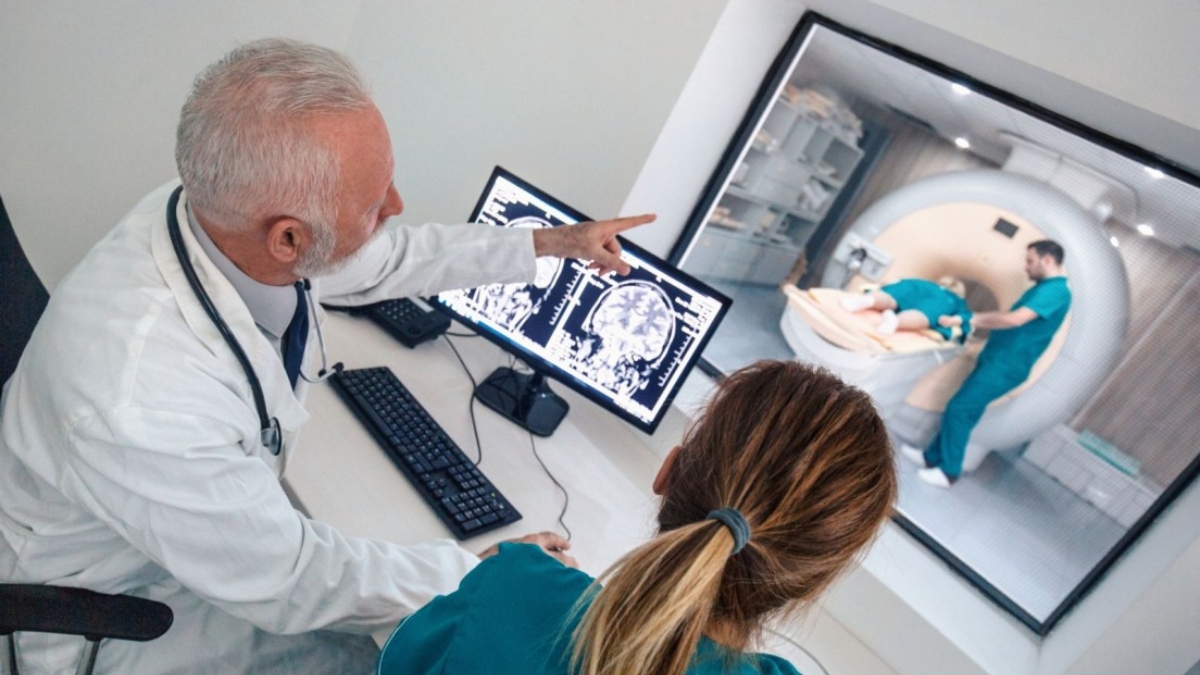
Are you suffering from Glioblastoma? Well, It is one of the most aggressive and common types of brain cancer, recognized for its rapid growth and poor prognosis.
As a form of glioma, this condition arises from glial cells, which support and protect nerve cells in the brain. This article aims to provide essential information about glioblastoma, including its symptoms, causes, treatment options, and ongoing research efforts.
Understanding the condition can help patients, families, and caregivers navigate this challenging diagnosis.
Table of Contents
What is Glioblastoma?
Often referred to as glioblastoma multiforme (GBM), this tumor is classified as a Grade IV, according to the World Health Organization (WHO). Its highly infiltrative nature means that it can spread quickly to surrounding brain tissue, making complete surgical removal difficult.
Most commonly found in adults aged 45 to 70, GBM can occur at any age. The incidence of this aggressive tumor has been rising, prompting increased research and awareness.
Symptoms of GBM
The symptoms associated with GBM can vary widely depending on the tumor’s location in the brain. Common symptoms include:
- Headaches: Frequent headaches, often worse in the morning or during periods of physical activity.
- Seizures: New-onset seizures are a common symptom and may present as convulsions or altered consciousness.
- Cognitive Changes: Memory problems, difficulty concentrating, or personality changes can occur as the tumor affects brain function.
- Weakness: Patients may experience weakness or numbness in one side of the body, particularly if the tumor is in the motor cortex.
- Vision or Speech Issues: Depending on the tumor’s location, patients may have blurred vision or difficulty speaking.
Individuals experiencing these symptoms should consult a healthcare professional for a proper evaluation, as they can also indicate other medical conditions.
Causes and Risk Factors
The exact cause of GBM remains unclear, but several risk factors may increase an individual’s likelihood of developing the disease. These include:
- Age: The risk of GBM increases with age, with most cases occurring in older adults.
- Gender: Men are more likely to be diagnosed with GBM than women.
- Genetic Factors: Certain genetic conditions, such as neurofibromatosis and Li-Fraumeni syndrome, can increase the risk of developing brain tumors.
- Exposure to Radiation: A history of radiation therapy to the head for other cancers may increase the risk of GBM.
- Family History: A family history of brain tumors may also contribute.
Diagnosis of GBM
Diagnosing this aggressive tumor involves a series of tests and imaging studies. The process typically includes:
- Neurological Examination: A healthcare provider will perform a neurological exam to assess cognitive function, coordination, and reflexes.
- Imaging Studies: Magnetic resonance imaging (MRI) is the primary imaging technique used to visualize the tumor’s location and extent. In some cases, a CT scan may also be used.
- Biopsy: A definitive diagnosis is made through a biopsy, where a small sample of the tumor is removed and examined for cancerous cells. This can be done during surgery or using a needle biopsy.
Treatment Options for GBM
Treatment for glioblastoma typically involves a multidisciplinary approach, including surgery, radiation therapy, and chemotherapy.
- Surgery: The first step in treatment often involves surgical removal of as much of the tumor as possible. However, due to its infiltrative nature, complete resection is rarely achievable. The primary goal is to relieve symptoms and obtain tissue for diagnosis.
- Radiation Therapy: Following surgery, most patients will receive radiation therapy to target any remaining cancer cells. This treatment can help slow tumor growth and manage symptoms.
- Chemotherapy: The most common chemotherapy drug used for GBM is temozolomide (TMZ), which is often given in conjunction with radiation therapy. Chemotherapy may continue for several cycles after radiation treatment.
- Targeted Therapy and Immunotherapy: Research is ongoing to develop targeted therapies and immunotherapies for GBM. These approaches aim to exploit specific genetic mutations or enhance the body’s immune response against cancer cells.
Ongoing Research and Clinical Trials
Research into GBM is a rapidly evolving field, with ongoing clinical trials exploring new treatment options. Scientists are investigating various approaches, including:
- Gene Therapy: Researchers are studying the use of gene therapy to deliver therapeutic genes directly to tumor cells, potentially enhancing treatment effectiveness.
- Vaccines: Clinical trials are underway to evaluate the effectiveness of vaccines designed to stimulate the immune system to attack GBM cells.
- Combination Therapies: Current research focuses on investigating the efficacy of combining multiple treatment modalities, such as chemotherapy, radiation, and immunotherapy.
Living with Glioblastoma
Receiving a diagnosis of GBM can be overwhelming for patients and their families. It’s essential to seek support from healthcare professionals, support groups, and mental health resources.
Many patients find comfort in connecting with others facing similar challenges. Caregivers are vital in providing emotional support and assistance with daily activities.
Conclusion
Glioblastoma is a formidable challenge, but understanding the disease, its symptoms, and treatment options is crucial for patients and their families. Early detection and intervention can significantly impact outcomes and quality of life. If you or a loved one is experiencing symptoms consistent with GBM, it is essential to consult a healthcare professional for a thorough evaluation.
Staying informed about GBM can empower patients and families as they navigate this difficult journey. As research continues to advance, there is hope for new therapies and improved outcomes for those affected by this aggressive form of brain cancer.
For more information and resources on GBM, you can explore reputable medical websites and organizations dedicated to cancer research and support.